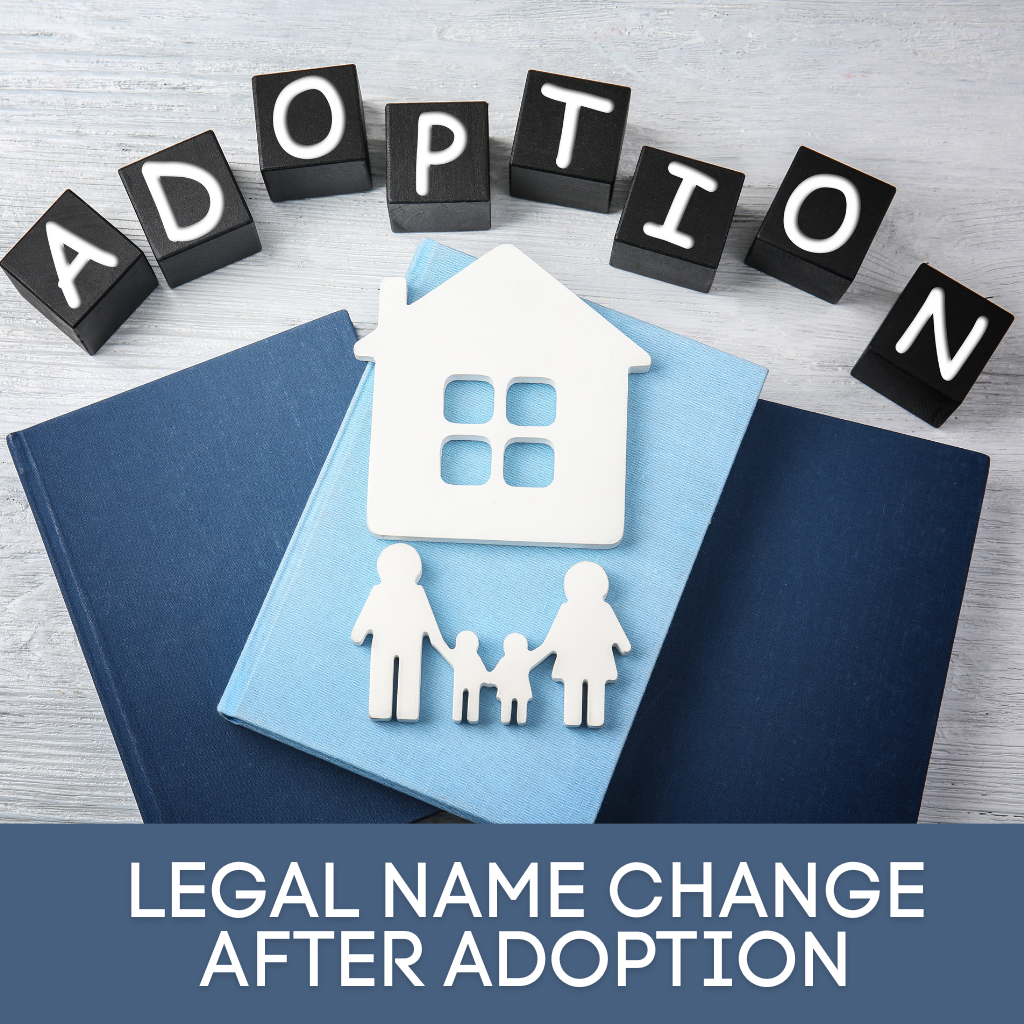A Fresh Start, A New Name: Understanding Name Changes After Adoption in India (Simple Guide)

A Fresh Start, A New Name: Understanding Name Changes After Adoption in India (Simple Guide)
Adoption is a wonderful journey that brings families together. It’s about giving a child a loving home and a bright future. When a child is adopted, it often means they get a new identity – a new name, and new parents on their official papers. This guide from [Your Consultancy Name] will help you understand how to make these changes legally in India, especially using a very important government document called the Gazette of India.
We know that legal stuff can sound complicated, especially if you’re an undergraduate student or just someone who’s new to these processes. So, we’ll explain everything in simple, easy-to-understand language.
What Exactly is Adoption in India?
Imagine a child who needs a family, and a family that wants a child. Adoption is the official, legal way to bring them together, making the child a full and permanent member of their new family. It’s like they were born into that family, getting all the same rights and responsibilities.
In India, adoption is mainly handled by two important laws:
• The Juvenile Justice (Care and Protection of Children) Act, 2015 (JJ Act): This is the main law for adoption, and it applies to everyone in India, no matter their religion. It focuses on children who are orphaned (no parents), abandoned (left alone), or surrendered (given up by their parents).
• The Hindu Adoption and Maintenance Act, 1956 (HAMA): This law is specifically for Hindus (which includes people who are Buddhist, Jain, or Sikh).
There’s also a central body called CARA (Central Adoption Resource Authority). Think of CARA as the main boss for all adoptions in India. They make the rules and watch over all the adoption agencies to make sure everything is done correctly. If you adopt, it usually has to go through an agency approved by CARA.
Who Can Adopt a Child in India?
Not just anyone can adopt. There are rules to make sure the child goes to a good home. Here are the simple rules:
Single or Married: You can be married or single to adopt.
Age Matters: There are age limits. Generally, there needs to be a big age gap (at least 25 years) between the adoptive parent and the child. For married couples, they look at their combined age.
Gender Rules:
- A single man can only adopt a boy.
- A single woman can adopt either a boy or a girl.
- A married couple can adopt either a boy or a girl, even if they already have their own children.
Marriage Stability (for couples): If you’re married, you should have been married for at least two years and have a stable relationship.
Health and Money: You need to be healthy (physically and mentally), emotionally stable, and have enough money to take care of a child. You shouldn’t have any serious, life-threatening illnesses.
Number of Children: If you already have two or more children, it’s generally harder to adopt, but there are exceptions (like adopting a child with special needs, or if you’re adopting from a close relative).
How Does an Adoption Become Legal?
Making an adoption official and legal is a careful process. It’s designed to protect the child and make sure they smoothly become part of their new family.
1. Sign Up with CARA: First, the hopeful parents need to register themselves on CARA’s official website.
2. Home Visit (Home Study Report): A social worker from an approved adoption agency will visit the hopeful parents’ home. They’ll check if the home is suitable and if the parents are ready to take on the responsibility. This is called a “Home Study Report.”
3. Meet a Child’s Profile: Based on the home visit and other checks, CARA will show the parents profiles of children who are legally ready for adoption.
4. Say “Yes” to the Child: If the parents like a child’s profile, they can visit the child and confirm their decision.
5. Go to Court: Once the child is chosen, the adoption agency helps file a request (called a “petition”) in the District Magistrate’s court. This is a very important step where the adoption becomes legally official.
6. Court Says “OK” (Adoption Order): The court will check all the papers and make sure everything is proper and fair. If the child is 5 years or older, the court will even check if the child agrees (if they can understand). Once everything is fine, the court gives an official paper called the Adoption Order. This “Adoption Order” is the most important document for everything that comes next, especially changing names on other papers.
7. Check-ups After Adoption: The adoption agency usually checks in with the family after the adoption to make sure the child is settling in well.
What Papers Do You Need for a Legal Adoption?
There are many papers needed for a legal adoption, and they can be slightly different depending on the type of adoption. But here are some common ones:
1. For the Hopeful Parents:
ID proofs like Aadhar Card, PAN Card, Passport.
Proof of where you live (like electricity bills).
Proof of your income (salary slips, tax papers).
Doctor’s letters saying you are healthy enough to adopt.
Marriage certificate (if married), or divorce papers/death certificate of spouse (if applicable).
Your recent photos.
If you have other children, sometimes their agreement is needed.
2. For the Child (provided by the adoption agency):
A report about the child’s background, health, and how they are developing.
The child’s medical report.
A paper proving the child’s birth (if a birth certificate isn’t available).
Papers showing the child was legally given up by their biological parents or placed under care.
How to Change the Child’s Name After Adoption
Changing the child’s name after adoption is a big step to show they are now part of their new family. This doesn’t happen automatically; you have to follow a few official steps, and the most important one involves the Gazette of India.
Here’s how it usually works:
1. Get the Adoption Order: Make sure you have the official “Adoption Order” from the court. You’ll need copies of this.
2. Write an Official Statement (Affidavit):
This is a formal declaration saying you want to change the child’s name.
It needs to be written on special paper (called “non-judicial stamp paper”) and signed in front of an official called a “Notary Public.”
This paper should clearly state:
The child’s old name.
The child’s new name (first name, last name, or both).
Your names (the adoptive parents) and address.
The reason for the name change (because of the adoption).
That everything you’ve written is true.
3. Put an Ad in Newspapers:
This step is to tell the public about the name change.
You need to put an ad in two newspapers:
One big English newspaper that’s read across the country.
One newspaper in the local language of your area.
The ad should have: the child’s old name, new name, your names and address, and say it’s due to adoption.
Keep the original copies of these newspapers as proof!
4. Apply for Gazette Notification:
1. his is the most important step. It officially records the name change in the Gazette of India, which is like the government’s official public record book. Once it’s in the Gazette, it’s legally recognized everywhere.
2. You send your application to a government office in Delhi (Department of Publication).
3. Here’s what you’ll typically need for the Gazette:
Application Form: Filled out and signed by you (the adoptive parents).
Notarized Affidavit: The original official statement you got prepared.
Newspaper Copies: The original copies of the newspapers with your ad.
Adoption Order: A certified copy of the court order.
Your ID Proofs: Copies of your Aadhar, PAN, Passport, etc. (self-attested, meaning you sign them yourself).
Your Address Proofs: Copies of your utility bills, voter ID, etc. (self-attested).
Child’s Photos: Two recent passport-sized photos of the child.
Digital Copies: A CD with digital copies of some documents.
Declaration Letter: A letter saying the paper and digital copies match.
Request Letter: A formal letter asking them to publish the name change.
Payment: A fee, usually paid online.
Since the child is a minor (under 18), you, the adoptive parents, will handle this application.
5. Update Other Important Papers:
Once the name change is in the Gazette, you can now update all other important documents. The Gazette notification is your official proof.
You’ll need to change the child’s name on:
Birth Certificate: Go to the local government office that handles births and deaths. Show them the Adoption Order and the Gazette notification to get the birth certificate updated with the new name and your names as parents.
Aadhar Card: Apply for an update.
PAN Card: Apply for a new one with the updated name.
Passport: Apply for a new passport for the child.
School Records: Inform the school and give them the new documents.
Bank Accounts: If the child has any, update th
How to Change Parents’ Names on Documents After Adoption
Changing the names of the parents on a child’s documents is also very important to show the new legal relationship. The “Adoption Order” itself is the main paper that says you are now the legal parents.
• Birth Certificate: This is the key document to change. With the official Adoption Order, you can go to the local office (like the Registrar of Births and Deaths or the Municipal Corporation) to change the child’s birth certificate. They will replace the biological parents’ names with your names (the adoptive parents). Recent rules have made this easier, so you usually don’t need the biological parents’ permission for this change.
• Other Documents: Once the birth certificate is updated, it serves as the basic proof. For other documents like Aadhar Card, PAN Card, and Passport, you’ll use the Adoption Order along with the updated birth certificate (and the Gazette notification if the child’s name was also changed) to update the parent details.
What Happens If You Don’t Follow the Rules? (Complications)
It’s super important to follow all the legal steps. If you don’t, you can face serious problems:
• Adoption Might Not Be Legal: If you don’t follow the proper laws and go through CARA, the adoption might not be considered legal at all.
• Child’s Legal Status: Without proper papers, the child might not be legally recognized as your child. This can cause problems with inheritance, getting into schools, and even getting government benefits.
• Risks of Trafficking: Adoptions done illegally often skip important checks and can unfortunately be linked to child trafficking or other forms of exploitation.
• Penalties and Jail Time: The law has strict punishments for illegal adoptions. Anyone involved in an adoption outside the legal system can face jail time and big fines.
• Problems with Documents: Without a legally recognized adoption and name change through the Gazette, you won’t be able to update important papers like birth certificates, Aadhar, PAN, and passports. This means the child will always have identity problems.
• Emotional Impact: Not having legal recognition can be very upsetting for the child and the adoptive family, making them feel less secure and part of the family.
Gazette Process: How Long It Takes and What It Costs
Getting your name change published in the Gazette of India is important, and here’s a rough idea of the time and money involved:
• How Long It Takes:
1. Official Statement (Affidavit): 1 to 3 days.
2. Newspaper Ads: 3 to 7 days (depending on when the newspapers print).
3. Sending Papers to Gazette: Can be done quickly once everything is ready.
4. Gazette Publication: The government office usually takes 1 to 2 months to publish the name change in the e-Gazette after they receive all your correct papers.
5. Updating Other Papers: After the Gazette is out, updating things like Aadhar, PAN, and Passport can take another 15 to 30 days for each, depending on how fast those departments work.
6. Overall Time: The whole process, from starting the name change to updating most major papers, can take about 2 to 4 months.
• How Much It Costs:
Official Statement (Affidavit): Cost of special paper (around Rs. 100-200) + Notary fee (Rs. 50-200).
Newspaper Ads: This is usually the biggest cost, anywhere from Rs. 1,000 to Rs. 5,000 or more, depending on which newspapers you choose and how big your ad is.
Gazette Publication Fee: The government fee for a minor’s name change is currently around Rs. 1,700. (These fees can change.) You usually pay this online.
Consultancy Fees (if you use one): If you ask a professional service like ours for help, there will be a service charge for guiding you, preparing papers, and sending them in.
Other Document Update Fees: There might be small fees for updating individual documents like Aadhar, PAN, and Passport.
Rough total cost (not including consultancy fees):
Around ₹3,000 to ₹7,000, but this can change based on your choices for newspapers and other specific needs.
Where to Get Help
If you need help with changing names through the Gazette of India after adoption:
• Department of Publication: This is the main government office in Delhi that handles the Gazette. You can send papers directly to them by mail.
• Lawyers: Lawyers who specialize in family law or name changes can guide you, prepare documents, and help with any legal issues.
• Consultancy Services: Companies like [Your Consultancy Name] specialize in name change processes. We can give you full support, from preparing your documents to sending them to the Gazette and following up. This can make the whole process much simpler for you.
At [Your Consultancy Name], we believe adoption is a beautiful new chapter. We are here to make sure that the legal steps for changing names and parent details are done smoothly and correctly. Our experience with Indian laws and the Gazette of India means we can offer:
• Easy-to-understand advice: Clear steps explained simply.
• Help with papers: Making sure your forms and documents are perfect.
• Timely process: Helping you avoid delays by submitting everything correctly.
• Clear information: Keeping you updated on costs and how long things will take.
A legally recognized new name and updated parent details are not just formalities; they are very important for a child’s identity and their future security. Let us help you make this new beginning for your family smooth and completely legal. Contact [Your Consultancy Name] today for a chat!
Realities we’ve designed







